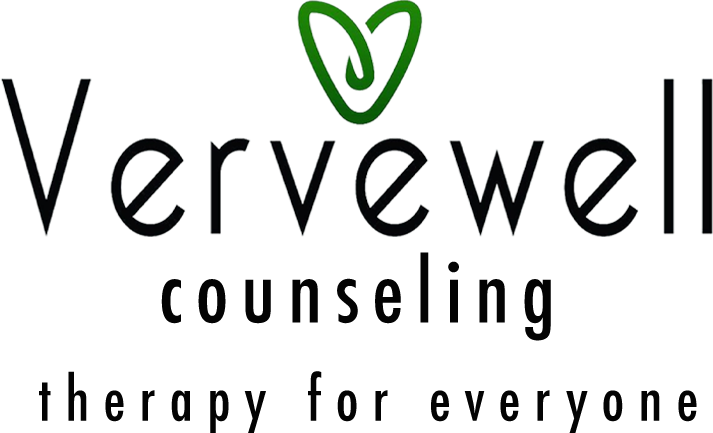Blake Overstreet (LPC Assoc under the supervision of Beth C Lewis, LPC-S) spells out the intrigue and efficacy of EMDR therapy. Blake is certified in EMDR and is welcoming new clients for such. Even if you already have a Vervewell therapist, schedule a few EMDR sessions with Blake. Vervewell therapists works collectively when helpful, and as highlighted in his articles, talk therapy and EMDR work in tandem beautifully.
For decades, talk therapy has been the cornerstone of emotional healing. Psychodynamic and other traditional approaches offer invaluable insights into how our past shapes our present. They help us explore patterns, understand our motivations, and develop healthier ways of relating to ourselves and others.
But what happens when talk therapy alone isn’t enough to fully resolve deeper emotional wounds? This is where Eye Movement Desensitization and Reprocessing (EMDR) can step in as a powerful complement, offering a way to access and heal the unconscious layers of trauma that words often cannot reach.
Let’s explore how combining EMDR with talk therapy can create a holistic and transformative approach to mental health.
The Strengths of Traditional Talk Therapy
Psychodynamic therapy focuses on uncovering the unconscious patterns and unresolved conflicts that influence our current behaviors and relationships. By understanding these forces, clients gain insight and can begin to make more conscious choices. Talk therapy offers:
- Self-Awareness: Clients develop a deeper understanding of their emotional triggers and patterns.
- Emotional Expression: Talking through experiences provides a safe outlet for feelings.
- Relational Growth: Exploring attachment dynamics fosters healthier connections with others.
However, some experiences, particularly trauma, are not fully accessible through verbal exploration. This is because trauma resides not only in our conscious thoughts but also in our body and emotional memory.
Where Talk Therapy May Hit a Roadblock
Trauma often bypasses the brain’s verbal and logical processing centers, instead becoming “stuck” in the limbic system—the part of the brain responsible for emotions and survival instincts. These memories can feel inaccessible to talk therapy alone, manifesting instead as:
- Unexplained emotional overwhelm.
- Intrusive thoughts or flashbacks.
- Physical symptoms like tension or fatigue.
While talk therapy can help contextualize these feelings, it may not fully resolve the root cause of the distress. This is where EMDR shines, providing a bridge between conscious understanding and deeper, somatic healing.
How EMDR Complements Talk Therapy
EMDR and talk therapy aren’t competing approaches—they are beautifully complementary. While talk therapy focuses on conscious exploration, EMDR addresses the unprocessed memories and emotional imprints stored in the brain’s nonverbal centers. Together, they create a more comprehensive path to healing.
- Unblocking the Stuck Points
In talk therapy, clients may recognize patterns and understand their origins but still feel unable to shift certain emotions or behaviors. EMDR works to “unstick” these emotional blocks by reprocessing the underlying traumatic memories. Once reprocessed, these memories lose their power, allowing the insights gained in talk therapy to take root more effectively. - Strengthening Self-Reflection
EMDR enhances the work of talk therapy by providing emotional relief, making it easier for clients to engage in deeper self-reflection. For example, a client who reprocesses a traumatic memory through EMDR may find it easier to explore their relationships or personal goals in talk therapy without being overwhelmed by anxiety or fear. - Addressing Trauma Beyond Words
Some experiences, especially those from early childhood, exist outside verbal memory. EMDR taps into these pre-verbal or nonverbal memories, helping clients resolve distress that may not be accessible through conversation alone. - Fostering Emotional Regulation
EMDR helps clients achieve a calmer baseline by reducing hyperarousal and emotional reactivity. This emotional regulation enhances their ability to engage with the slower, reflective nature of talk therapy, creating a more balanced therapeutic experience.
The Benefits of a Combined Approach
When EMDR and talk therapy are integrated, clients often report a deeper and more sustained healing experience. The benefits include:
- Faster Progress: By addressing trauma directly through EMDR, clients may move through emotional barriers more quickly, allowing for more meaningful work in talk therapy.
- Whole-Person Healing: The combined approach addresses both the cognitive and emotional aspects of distress, creating a more complete sense of resolution.
- Empowered Growth: With traumatic memories resolved, clients are better able to implement the insights and strategies they’ve developed in talk therapy.
An Example of Integration
Imagine a client working in psychodynamic therapy to explore why they struggle with trust in relationships. They uncover a history of childhood emotional neglect but feel stuck when trying to change their responses in present-day interactions.
In this scenario, EMDR can be used to reprocess painful childhood memories, reducing the emotional charge and allowing the client to internalize a new belief: “I am worthy of love and connection.” With this new emotional foundation, they can return to talk therapy with greater clarity and confidence, ready to deepen their relational work.
Final Thoughts
Healing is rarely a one-size-fits-all journey. By combining the strengths of traditional talk therapy with the transformative power of EMDR, clients can access a fuller range of healing. EMDR addresses the raw, unprocessed pain stored in the brain, while talk therapy helps integrate these shifts into a broader understanding of oneself and one’s relationships.
If you’re navigating trauma, emotional pain, or persistent life patterns, consider how these two approaches can work together. With the right support, you can achieve both emotional relief and the lasting growth that comes from self-awareness and meaningful insight. Your healing journey can be as dynamic as you are—and these tools together can guide the way.
At Vervewell, our team of exceptionally skilled therapists offers various styles of and approaches to talk therapy: Psychodynamic, Cognitive Behavioral Therapy (CBT), Solution Focused Therapy, and EMDR. EMDR requires extra certification, which Blake holds. Please feel free to ADD sessions with Blake to explore EMDR, while you KEEP your sessions with your Vervewell therapist. We work collaboratively when this approach is requested by our clients, or encouraged by our team.
As always, in health and wellness.
Blake Overstreet, LPC, is a licensed professional therapist at Vervewell Counseling in Fort Worth, TX, specializing in therapy for teenagers (13+), young adults, adults, and couples.Blake empowers clients to deepen emotional resilience, cultivate meaningful relationships, foster personal growth, uncover purpose and meaning, and overcome self-imposed barriers.While operating primarily from a psychodynamic perspective, Blake also offers EMDR (Eye Movement Desensitization and Reprocessing) for individuals dealing with post-traumatic stress. He sees clients in person and via telehealth across Texas.



